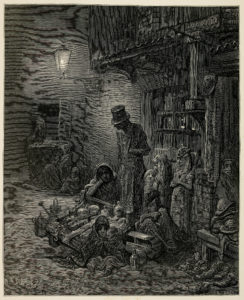The Brilliance and Beauty in Wordsworth’s Composed upon Westminster Bridge
In his poem, Composed upon Westminster Bridge, William Wordsworth reveals his relationship with London by creating a poem from the Westminster Bridge overlooking various iconic landmarks that are calm and beautiful. The poem to begin is a Petrarchan Sonnet, which is a poem of fourteen lines divided into two parts. The first part is the first eight lines known as the octave and the remaining six lines form the sestet, which is the second part of the poem. The rhyme scheme in a Petrarchan sonnet is abbaabbacdcdcd, which is the case for this poem. Being an aspiring creative writer and poet, I am fascinated by the various forms of poetry and the way they allow the writer to depict and portray certain ideas or events and I am also intrigued as to how the reader can interpret different forms of poetry to relate to certain beliefs or opinions. That being said, it is very difficult to write a poem to begin with, let alone a sonnet, let alone a Petrarchan sonnet that follows the traditional rhyme scheme. And what makes Wordsworth’s poem even more fascinating to me is that it is written in perfect iambic pentameter, with ten syllables in each line beginning with an unstressed syllable, then a stressed syllable, and so on. The brilliance behind just the layout and form of the poem is remarkable and captivating at the same time. The tone used is very much of a calm and respectful approach to the bridge and all the sights and sounds it has to offer. Wordsworth talks about the beauty of the city and the quietness and stillness that London experiences during the morning hours. The poem itself discusses how the Earth has nothing more beautiful to call its own than London and the ships, towers, domes, and theatres that identify London as such a beautiful city. The words and the poem itself allow the reader to sense a strong admiration for the fogless London and the pride and honor the speaker takes in writing this poem about this city.
